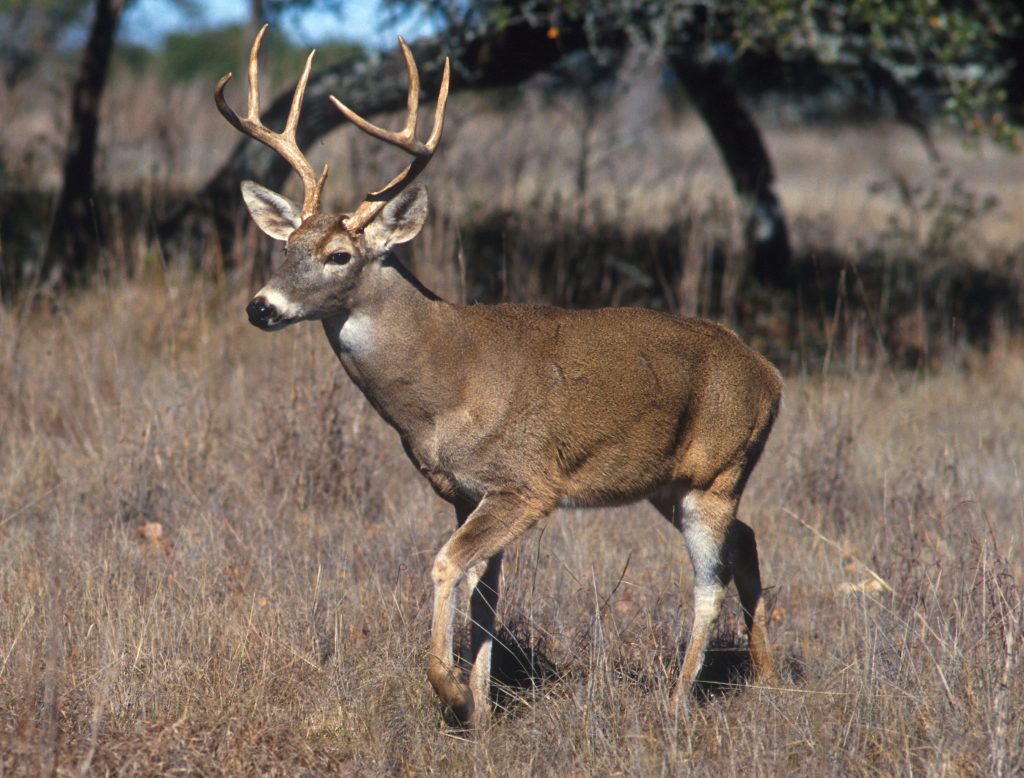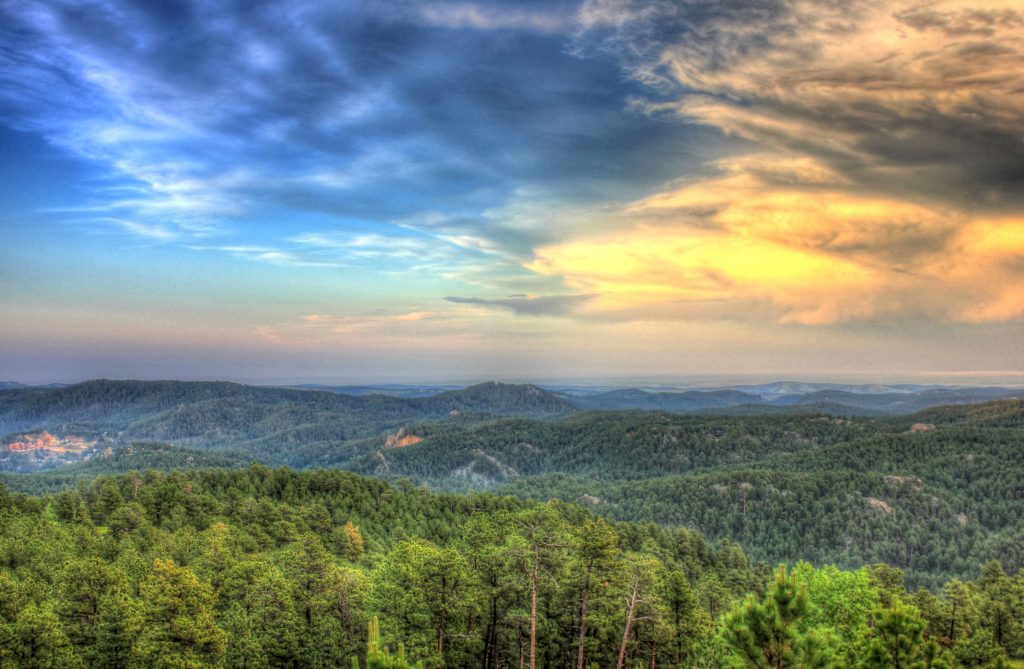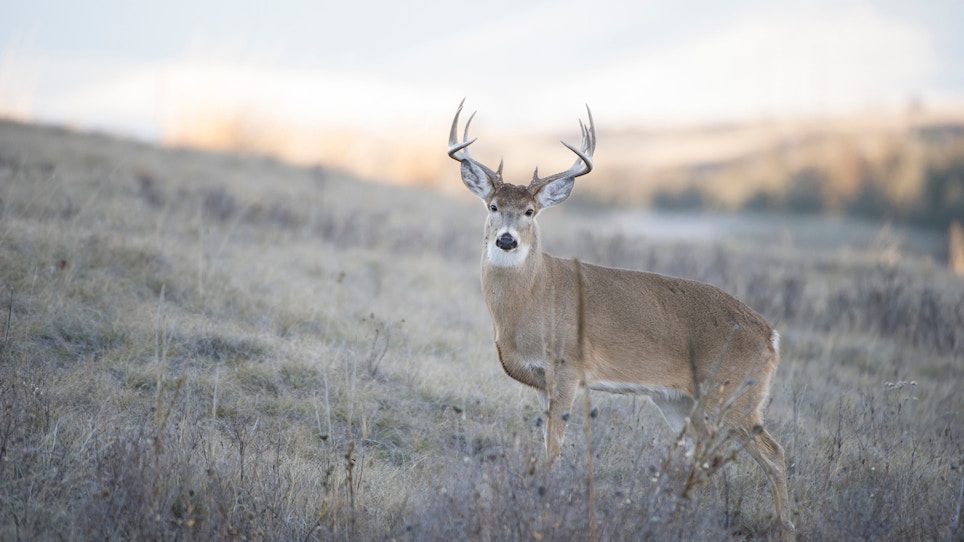Whitetails east; mule deer west. That’s just the way it is, right? Hardly. Serious whitetail fanatics know that some of the country's best whitetail hunting lies west of the Missouri River, a symbolic dividing line between old America and the new frontier. Here's what you need to know about western whitetail.
It’s widely believed that whitetails moved west with the pioneers and agriculture and that the Virginia deer (as Odocoileus virginianus was once known) is a relative newcomer to the West. But we know better. During their expedition, Lewis and Clark encountered whitetails well through the present-day Dakotas, Montana and Wyoming. From their journals: “We remained at Pleasant Camp, and Early this morning, Captain Lewis, and several of the party went out hunting, they returned in the afternoon, having killed 13 common deer … (Private Joseph Whitehouse, September 17, 1804).”
Today, Lewis and Clark’s “common deer” still inhabit the great American West, sometimes in astounding numbers and often in the form of mature bucks that will take your breath away.
Western whitetail states
So, when considering your next away-from-home whitetail hunting adventure, why not look west for the hunt of a lifetime?
Here’s how to make that happen. I’ve listed the states in descending order, with my top pick for western whitetail hunting listed first and so on. Please note that while 2017 seasons were not set the time this article ran in Whitetail Journal, generalities are outlined.
1) Montana
Summary: Montana is most certainly the mecca of western deer hunting. Three factors make it so:
1) Habitat. Montana is huge, and that means there are is plenty of room for western whitetails to roam. Riverbottom habitat is prime (the Yellowstone and Big Horn are classics), but you may be better off on a lesser-known corridor such as the Milk, Musselshell, Powder or Tongue. Bottomlands along smaller streams and creeks hold western whitetails, too.
2) Good bucks. Montana is full of mature western whitetails; with patience and hard hunting work, bucks in the 130- to 140-inch range are common.
3) Rut hunting. With a general season running through most of November, the rifle hunter has chance to hunt rutting bucks.
Annual Whitetail Harvest: 42,000.
Big Bucks: 148 Boone and Crockett Entries.
Top Trophy Counties: Flathead, Lincoln, Lake, Rosebud, Missoula.

Riverbottoms across the West offer whitetails a combination of cover and agriculture needed to grow big.
2) Idaho
Summary: Idaho is mule deer heaven, but it’s got plenty of western whitetails too, chiefly in the forested north and north-central regions of the state, primarily north of the Salmon river. The highest whitetail densities occur in the lower Clearwater and Salmon River drainages. But in the southern part of the state, whitetails are found along major riparian areas, including the Boise, Weiser, Payette, Snake and Lemhi River drainages.
Annual Whitetail Harvest: 30,568.
Big Bucks: 94 Boone and Crockett Entries.
Top Trophy Counties: Latah, Nez Perce, Clearwater, Bonner, Idaho.
License Process: Most whitetail units are controlled, meaning you must enter a draw. May 1 to June 5 is the usual application period.
Cost: Nonresident hunting license — $240; Deer tag — $301.75.
Season Structure: Varies by unit. Generally, archery hunting starts in late August and runs through September. Firearms hunting generally runs early October through mid-November.
Public Land Opportunities: Idaho offers good public land hunting opportunities, even for western whitetails. There’s plenty of U.S. Forest Service land in the northern sections, plenty of BLM access and, important to whitetail hunters, Access Yes lands open up almost a million more acres. More information at http://fishandgame.idaho.gov/ifwis/huntplanner/accessyesguide.aspx.
More Resources: Check out the great Idaho Hunt Planner Tool on the Idaho Department of Fish and Game website at https://idfg.idaho.gov/hunt, or call (208) 334-3700.
Related: Where do deer sleep?
3) Washington
Summary: Maybe surprising, maybe not, but Washington is a top-3 western whitetail state. However, Washington whitetails are mostly limited to the eastern third of the state, particularly in the northeast, the Idaho border counties and most of the Blue Mountains. Region 1 (the 100-series counties of Ferry, Stevens and Pend Oreille) and Region 3 (Asotin, Garfield, Columbia and Walla Walla Counties, the 300 series) are best. The 200 series units also hold western whitetails.
Annual Whitetail Harvest: 26,000.
Big Bucks: 73 Boone and Crockett Entries
Top Trophy Counties: Stevens, Spokane, Pend Oreilles, Okanogan
License Process: You must enter a lottery for a license, and applications are due in mid-May.
Cost: Nonresident deer hunting license — $434.30.
Public Land Opportunities: Of all the western states, Washington could do the best job of working to help hunters find a place to hunt. Go to Fish and Wildlife’s Hunting Access Page at http://wdfw.wa.gov/hunting/hunting_access/. Also, download “The Basics of Hunting Access in Washington” publication at http://wdfw.wa.gov/publications/01808/wdfw01808.pdf. Note: It’s possible to get hunting access for westernwhitetails in this friendly state on a handshake; archery hunting could be your ticket in.
Season Structure: Washington does an excellent job of breaking out tags and hunts. Opportunities are abundant for whitetail hunts in 100, 200 and 300 series units. Early Archery: Sept. 1 through 24 or 29 (unit dependent). Late Archery: Multiple dates from mid-November through mid- to late-December. (Note: These are good rut hunts.). Early Muzzleloader: Sept. 30 through Oct. 8. Late Muzzleloader: Multiple dates from late-November through early-December (also good rut hunts.). General Firearm: Oct. 14 through 24 or 27 (unit dependent.). Late Firearm: Nov. 11 through 19 (good rut hunt.)
More Resources: “The Basics of Deer Hunting in Washington” publication is a great place to start. Go to http://wdfw.wa.gov/publications/01806/wdfw01806.pdf, or call (360) 902-2200.
4) Wyoming
Summary: Considering harvest count and buck quality, Wyoming ranks right in the middle for your western whitetail hunt. Two areas stand out for Wyoming whitetails. One is the portion of the Black Hills that reside in the state; look to Regions A and B in the northeast. The other is riverbottom country — in this state, you name the river and there will be western whitetails along it. Add agriculture in the form of alfalfa fields and hay meadows and whitetail counts will be even higher. The North Platte is tops; the Medicine Bow (a major tributary of the North Platte), Powder, Belle Fourche and Big Horn are less known but highly productive. And don’t forget prairie country bucks, specifically south of the Black Hills down into regions T and J; plenty of room here for spot-and-stalk hunting.
Annual Whitetail Harvest: 17,000.
Big Bucks: 36 Boone and Crockett Entries
Top Trophy Counties: Fremont, Big Horn, Crook.
License Process and Costs: Most licenses are awarded by lottery only; that process opens Jan. 31 and runs through a deadline of May 31. There are some region-general licenses that don’t require lottery entry.
Costs: Nonresident deer tag — $312 (Nonresident special deer tag $512.); Nonresident archery license — $30; Conservation Stamp — $12.50; Lottery application fee — $14.
Public Land Opportunities: Wyoming is full of public land between vast U.S. Forest Service (USFS) and Bureau of Land Management (BLM) acres — most of those are in the state’s central and western parts, though. Wyoming’s Access Yes program of private Walk-In Hunting Areas hold more western whitetails. Go to https://wgfd.wyo.gov/Public-Access/Walk-In-Hunting.
Season Structure: Wyoming wisely manages its big-game herds on a very localized level, and season start and end dates vary widely. But in general, archery deer hunting starts Sept. 1, and firearms seasons run in October and November.
More Resources: www.wgfd.wyo.gov/hunting, or call 307-777-4600.
5) Colorado
Summary: Colorado is a solid western whitetail state, with big bucks and plenty of them in the state’s eastern sections. The only drawback is that few of them reside on some of Colorado’s 23 million acres of public land. Still, for the hunter willing to go to it with an outfitter or rancher or work a farmer for access (while waiting a few years in the draw), it could be the hunt of a lifetime. The Arkansas River from Pueblo east is classic. The Platte, South Fork of the Republican and Arikaree, along with Big Sandy Creek, are the other drainages to look to.
Annual Whitetail Harvest: 10,000.
Big Bucks: 59 Boone and Crockett Entries.
Top Trophy Counties: Yuma, Morgan, Powers, Logan.
License Process: You’ll need to work up a few preference points in Colorado’s lottery draw system to pull a whitetail tag. One option is wait for a lot of points and try to score a tag in a coveted public land area. The other approach is pay an outfitter or trespass fee to hunt and do it sooner. Lottery applications are due the first week of April.
Costs: Nonresident deer license — $376; Habitat Stamp — $10.
Public Land Opportunities: Most of the whitetail country is privately owned in Colorado. There are some public land accesses along the river corridors, but they are generally hunted hard.
Season Structure: Archery: Oct. 1 through 27, Nov. 8 through 30 and Dec. 15 through 21 (Plains Deer.). Muzzleloader: Oct. 14 through 24 (Plains Deer.). Firearms: Oct. 28 through Nov. 7 (Plains Deer.). Late Firearms: Dec. 1 through 4 (Plains Deer.).
More Resources: The Colorado Department of Parks & Wildlife does a great job guiding you through all you need to know to hunt the state. Go to http://cpw.state.co.us. Also, use Colorado’s Hunt Planner Hotline at 303-291-7526 for excellent good advice and helping you figure things out.
Related: The merits of homemade deer scent
6) South Dakota
Summary: In South Dakota, you can just feel the West as you approach then cross the Missouri. My kids cut their teeth on “West River” whitetails, and it is hard to beat the hunting and bucks here. Access can be challenging, but bowhunting is often the angle you need. That said, there is another option in South Dakota: The Black Hills. With 4 million acres of public land and a rebounding western whitetail population, you can hunt to your heart’s content. Truly big bucks are rare but nice ones are relatively abundant.
Annual Whitetail Harvest: 45,000, including whitetails shot east of the Missouri River.
Big Bucks: 181 Boone and Crockett Entries.
Top Trophy Counties: Gregory*, Day, Hyde, Lyman* (*These counties are west of the Missouri River.)
License Process: Nonresidents need to apply for licenses. Stick to West River and the Black Hills. With 2 to 3 points, you can draw a West River tag. The Black Hills are not as hard to draw. (Note: Archery tags are not limited.) Applications are due in July.
Costs: Archery — $286. Black Hills Firearm — $286. West River Firearm — $286. Muzzleloader — $80 (antlerless only for nonresidents.)
Public Land Opportunities: The Black Hills are largely public, and that makes for a fun hunt. The prairies in the northwest and southwest have room to roam with the Buffalo Gap and Grand River National Grasslands. Plus, South Dakota has an exceptional patchwork of Walk-In Areas, Game Production Areas and Waterfowl Production Areas, all of which can hold western whitetails.
Season Structure: Archery: Late September through Dec. 31 (dates vary by county). West River Firearm: Mid-November (dates vary by county). Black Hills Firearm: Nov. 1 through 30.
Muzzleloader: Dec. 1 through 31 or Jan. 15.
More Resources: Go to the Department of Game Fish and Parks Deer Hunting Page at https://gfp.sd.gov/hunting/big-game/deer/default.aspx, or call 605-223-7660.

The Black Hills of South Dakota (and some of Wyoming) offer excellent public-land hunting.
7) North Dakota
Summary: As you travel westward through North Dakota, you can feel the drier air and high plains of the West. North Dakota is a western whitetail sleeper, and that’s the way North Dakotans like it. They know the secret and the heart-stopping size of these bucks here. These are Dakota whitetails in the truest sense. North Dakota is going to be an archery play for most hunters, as those whitetail tags are not limited for nonresidents. On the other hand, muzzleloader and firearm hunters get only 1 or 2 percent of the available tags, respectively — and outfitters get half of those. That said, folks are good here, and you may be able to archery hunt on a handshake.
Annual Whitetail Harvest: 39,470 (includes whitetails shot east of the Missouri River).
Big Bucks: 115 Boone and Crockett entries.
Top Trophy Counties: Ward, Dunn*, McHenry, Grand Forks, McLean* (*These counties border the Missouri River.)
License Process: North Dakota is a draw state, and nonresidents are severely limited (see note above) for any kind of firearms tag.
Costs: Deer tag, either archery, muzzleloader or firearms — $250. Game and Habitat License — $20. Hunting and Fishing Certificate — $2.
Public Land Opportunities: Only about 5 percent of North Dakota is public land. You’ll need to do some footwork to find a place to hunt, but the good thing is landowners are often friendly to hunters here, especially since you’ll likely be archery hunting. There’s also North Dakota’s PLOTS (Private Lands Open to Sportsmen) program that’s tailor-made for upland bird and duck hunters, but the lands are opening to big game hunting as well: https://gf.nd.gov/plots/guide. There are tens of thousands of acres of U.S. Army Corps of Engineers (ACOE) lands around the Missouri River and its reservoirs, open to public hunting.
Season Structure: Archery: Sept. 12 through January 8. Firearms: Nov. 4 through 20. Muzzleloader: Nov. 25 through Dec. 11.
Resources: The North Dakota Deer Hunting Guide at North Dakota Game and Fish is an excellent resource: https://gf.nd.gov/regulations/deer, or call 701-328-6300.
Featured photo: Nick Trehearne Photography






